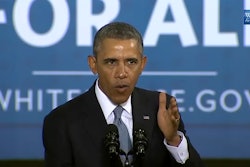
Response: EPA can do what it wants, within rulemaking guidelines. And while it’s true that the trucking industry doesn’t yet know what will work and what won’t in the more complicated round that hits 2018 model year trucks, truck and engine makers have worked with EPA and expect to be able to continue to look out for their customers’ interests.
But there are plenty of “known unknowns,” such as an asset’s residual value when that perfectly integrated package of tractor, trailer, and tires – spec’d for a specific application – goes to the secondary market where the sum of the parts will be considerably less fuel efficient than the whole.
Of course, the potholes are everywhere. If truck makers must meet efficiency standards on an annual basis for a particular class of vehicle, what happens when a customer can’t get the truck spec’d the way he wants it, because the brand has no more wiggle room under the production limits? Will a truck maker pass along a premium, commensurate with a non-compliance fine? Will customers have to shop for another brand, or spec a truck less to their liking? Might big buyers get a preference on better performing (higher horsepower) trucks?
Next Objection: Truck buyers might not have to deal with the red tape, but the new requirements are still going to cost them dearly with the higher pass-through cost of a new truck. Heck, trucks are hard to finance already. (Click here for the rebuttal >>)








